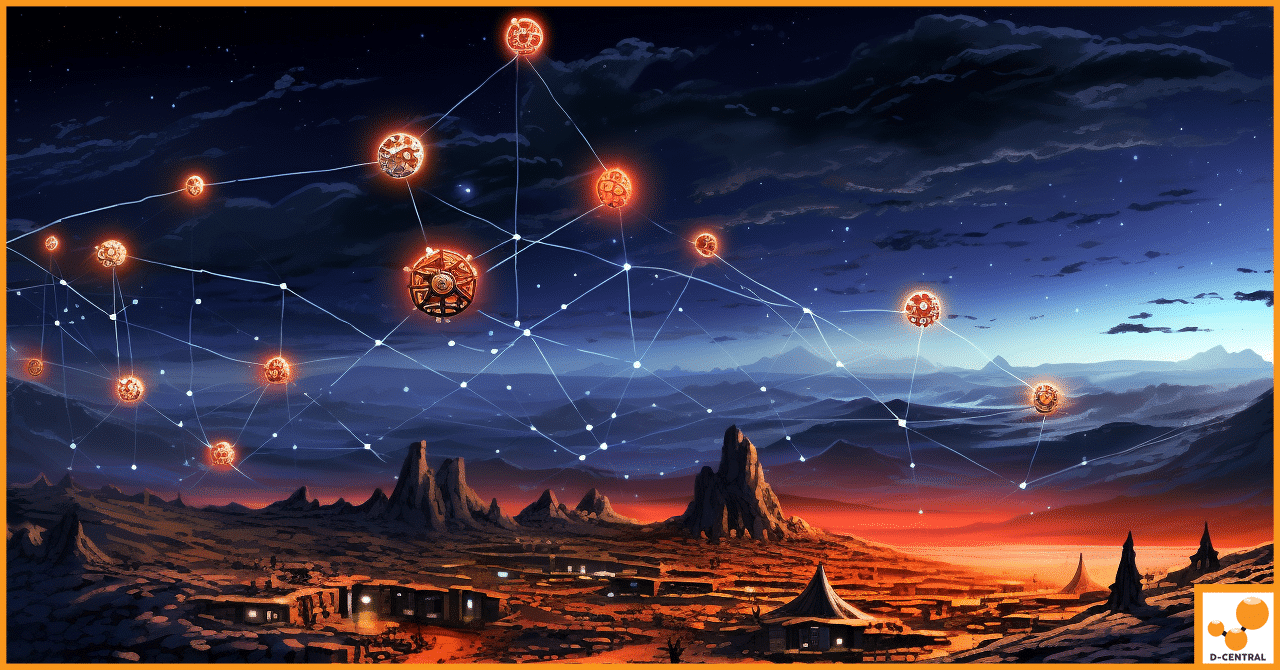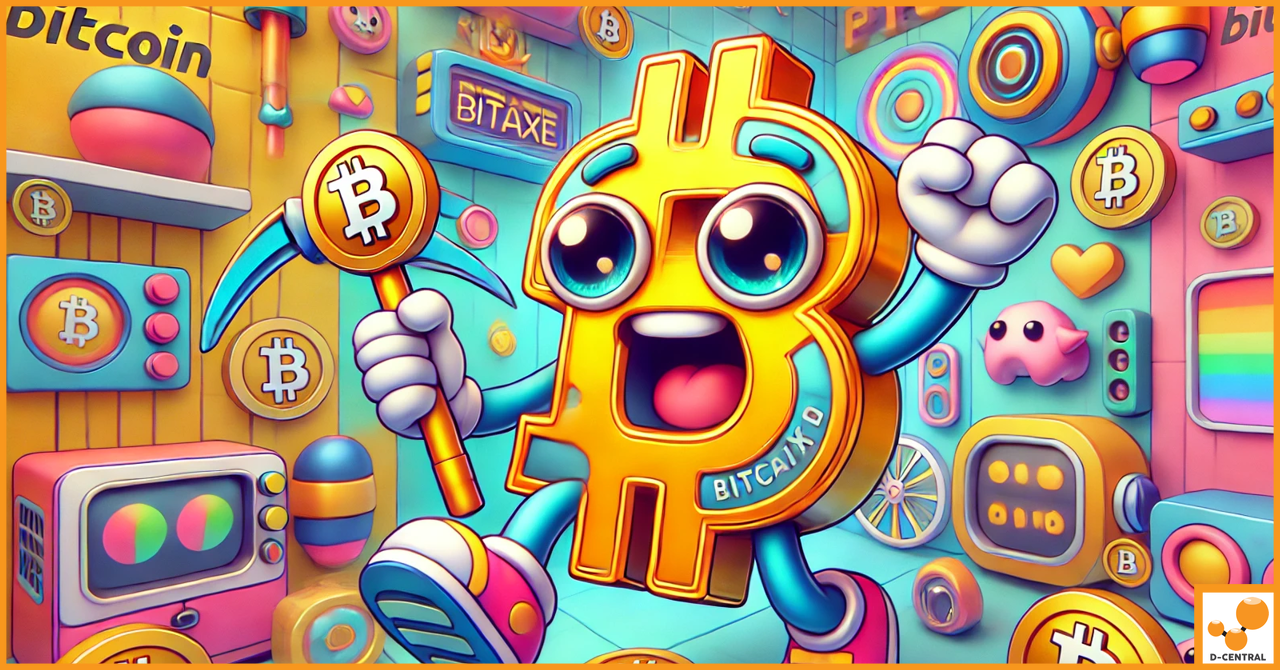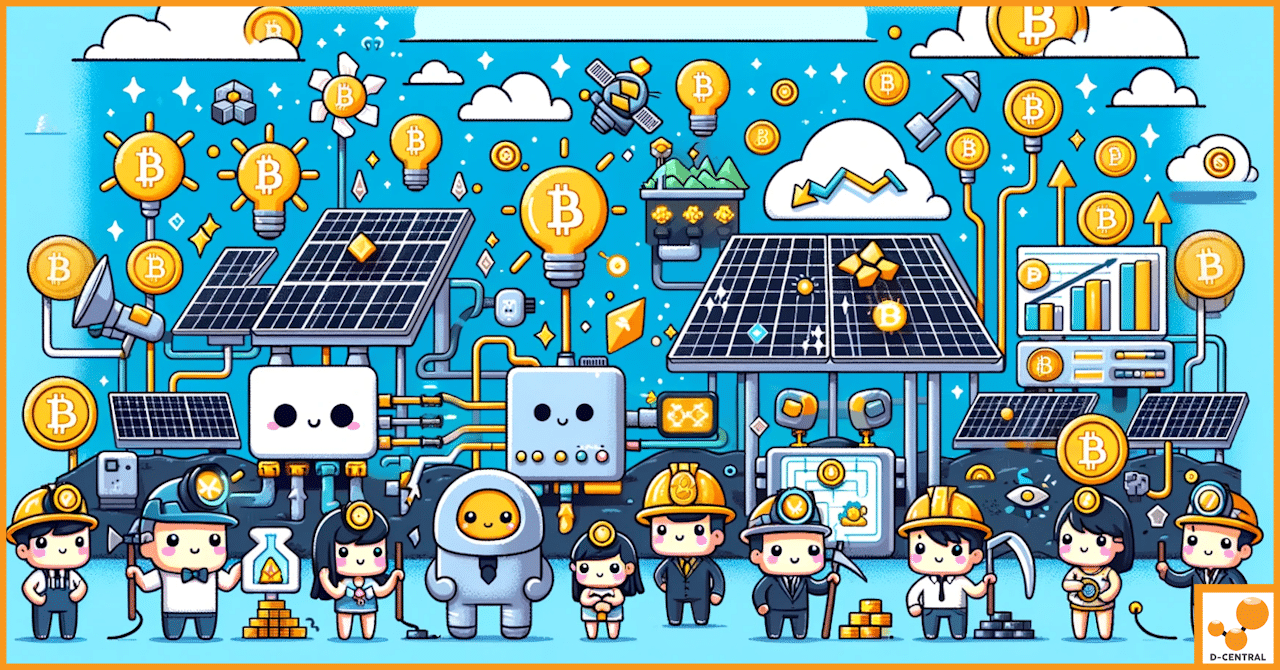
Mastering the Modular Data Center Market: A Deep Dive into Antbox vs. Other Providers
The digital age is evolving at an unprecedented pace, with data becoming the cornerstone of decision-making, innovation, and connectivity. This
4479 Desserte Nord Autoroute 440, Laval, QC H7P 6E2

In the digital age, Bitcoin has emerged as a revolutionary form of currency, challenging traditional financial systems with its decentralized nature. Unlike traditional currencies, Bitcoin is not controlled by any central authority, making it resilient to many forms of financial manipulation and control. But what truly sets Bitcoin apart is its ability to adapt and function in scenarios that would cripple traditional financial systems.
Imagine a world where the internet is inaccessible or perhaps, you find yourself in a remote location with no connectivity. In such situations, traditional online banking and digital payment systems would be rendered useless. But does that mean you can’t transact digitally? With Bitcoin, the answer is a resounding no.
Welcome to the world of Bitcoin transactions without the internet or in remote places. A world where Bitcoin’s resilience truly shines, demonstrating its potential not just as a digital currency, but as a lifeline in times of crisis. This is the world we will explore in this article, delving into the technologies that make these transactions possible and illustrating the true power of Bitcoin.
Bitcoin, often referred to as digital gold, is the world’s first decentralized digital currency. It was introduced in 2009 by an anonymous entity known as Satoshi Nakamoto. But what does it mean for a currency to be decentralized, and how does Bitcoin work?
Unlike traditional currencies, which are issued and regulated by central banks, Bitcoin operates on a technology called blockchain. A blockchain is a public ledger containing all transaction data from anyone who uses bitcoin. Transactions are added to “blocks” or the links of code that make up the chain, and each transaction must be recorded on a block.
When a Bitcoin transaction is made, it gets sent out to all users hosting a copy of the Bitcoin blockchain. Specific users called miners then try to solve a cryptographic puzzle which allows them to add the block of transactions to the ledger. This process ensures that all transactions are verified and prevents double-spending, a problem unique to digital currencies.
The decentralized nature of Bitcoin is its most significant feature. It means that no single entity has control over the network. This decentralization makes the Bitcoin network incredibly resilient to attacks: if one part of the network were to go down, the rest would continue to function, ensuring that Bitcoins can always be sent and received. This is a stark contrast to traditional financial systems, which can be shut down by attacking central servers.
This decentralization is not just a resistance to attacks, but it also means that Bitcoin transactions can be made peer-to-peer, without the need for an intermediary like a bank. This freedom makes Bitcoin a truly innovative tool in the world of finance, and as we’ll see in the next sections, it also allows for some unique applications in scenarios where traditional systems fail.
In the quest to make Bitcoin transactions possible without internet connectivity, two innovative solutions have emerged: TxTenna and GoTenna. These two technologies work in tandem to facilitate Bitcoin transactions in the most remote or disconnected environments.
GoTenna is a compact, lightweight device that pairs with your smartphone, enabling it to communicate with other GoTenna devices within range. It does this by creating a radio signal that can be received by other GoTenna devices, effectively creating a decentralized, peer-to-peer mesh network. This network operates independently of the internet or cellular service, making it incredibly resilient and versatile.
TxTenna, on the other hand, is an Android app developed by Samourai Wallet in collaboration with GoTenna. The app interfaces with the GoTenna device, enabling it to send and receive Bitcoin transactions over the GoTenna mesh network. When a user initiates a Bitcoin transaction on a smartphone with the TxTenna app, the transaction is relayed across the mesh network until it reaches a node with internet connectivity. This node then broadcasts the transaction to the Bitcoin network where it can be confirmed and added to the blockchain.
The beauty of this system lies in its decentralization. Just like the Bitcoin network itself, the GoTenna mesh network is peer-to-peer. This means that every GoTenna user acts as a node in the network, relaying transactions from one node to another. This creates a robust and resilient network that can function even when large parts of the network are offline or disrupted.
In essence, TxTenna and GoTenna extend the principles of decentralization that underpin Bitcoin into the realm of network connectivity. They create a system where Bitcoin transactions are not just free from the control of central banks, but also free from the constraints of traditional internet infrastructure.
At the heart of the TxTenna and GoTenna system lies a powerful networking concept: mesh networking. To fully appreciate the resilience of this system, it’s important to understand what mesh networking is and how it works.
A mesh network is a type of network in which all nodes (devices) are interconnected. In a traditional hub-and-spoke network, all devices connect to a central hub. If the hub goes down, the entire network fails. In contrast, in a mesh network, data can take any path to reach its destination, and there is no single point of failure. This makes mesh networks incredibly resilient.
One of the key features of mesh networks is their self-forming nature. When a new device joins the network, it automatically finds the best path to connect with the existing nodes. This means that setting up a mesh network is as simple as turning on the devices – they handle the rest.
Additionally, mesh networks are self-healing. If a node goes down or a connection is lost, the network automatically reroutes data through other paths, ensuring that the network remains up and running. This feature is particularly useful in challenging environments where network infrastructure can be unreliable or non-existent.
In the context of Bitcoin transactions, the reliability and resilience of mesh networks are invaluable. They ensure that transactions can be relayed across the network even in the face of significant disruptions. Whether it’s a natural disaster that takes out traditional network infrastructure, or a remote location far from the nearest cell tower, mesh networks provide a robust solution for maintaining Bitcoin connectivity.
In essence, mesh networking forms the backbone of resilience for Bitcoin transactions, enabling them to be conducted anywhere, anytime, regardless of the state of traditional network infrastructure.
The ability to conduct Bitcoin transactions over mesh networks is a game-changer, especially in areas with limited or no internet connectivity. But how exactly does a Bitcoin transaction travel across a mesh network? Let’s delve into the details.
When a user initiates a Bitcoin transaction on a device with the TxTenna app installed, the app creates a compact representation of the transaction, known as a signed transaction. This signed transaction contains all the necessary information to validate the transaction on the Bitcoin network, but it doesn’t require an internet connection to create.
The TxTenna app then sends this signed transaction to the GoTenna device, which broadcasts it as a radio signal. Other GoTenna devices within range receive this signal and pass it on, effectively relaying the transaction across the mesh network.
Eventually, the signed transaction reaches a node in the mesh network that has an internet connection. This could be a GoTenna device connected to a home Wi-Fi network, or a device with cellular data. This node then broadcasts the signed transaction to the Bitcoin network, where it is confirmed and added to the blockchain.
The role of TxTenna-python in this process is to provide a way for users to interact with the Bitcoin network without needing a full Bitcoin node. TxTenna-python is a Python-based implementation of the TxTenna protocol, which can send and receive Bitcoin transactions via a local txtenna-server. This makes it possible to confirm and broadcast Bitcoin transactions using a local bitcoind installation, further enhancing the resilience and flexibility of Bitcoin transactions over mesh networks.
In essence, conducting Bitcoin transactions over mesh networks involves a relay of information from one device to another until it reaches a node with internet connectivity. This process, while complex, ensures that Bitcoin remains usable even in the most challenging of circumstances.
While mesh networks provide a robust solution for local and regional Bitcoin transactions without internet, there’s another technology that takes this concept to a global scale: satellites. Specifically, the Blockstream Satellite network.
Blockstream Satellite is a groundbreaking service that broadcasts the Bitcoin blockchain around the world, 24/7. This means that anyone, anywhere on the planet, can access the Bitcoin network, even without an internet connection. All that’s needed is a satellite antenna and a computer or a hardware device with embedded functionality.
The Blockstream Satellite network operates by broadcasting real-time Bitcoin blockchain data from satellites in space to users on the ground. This ensures that the Bitcoin network remains accessible and synchronized even in areas with poor or no internet connectivity.
But the capabilities of Blockstream Satellite go beyond just broadcasting the Bitcoin blockchain. With the Blockstream Satellite API, users can also broadcast their own data over the satellite network. This could be anything from a Bitcoin transaction to a message or a file. The data is encrypted and broadcasted to all users within the satellite coverage area, who can then decrypt and read the data using their own private keys.
This ability to broadcast data globally, without the need for an internet connection, opens up a world of possibilities for Bitcoin and other applications. It ensures that Bitcoin remains not just a decentralized currency, but a truly global one, accessible to anyone, anywhere, at any time.
In essence, the power of satellites, as demonstrated by Blockstream Satellite, takes the resilience of Bitcoin to a whole new level. It ensures that Bitcoin can function not just in the face of local network disruptions, but even in the face of global internet outages.
In a world where the unexpected is the new normal, the resilience of our systems is being tested like never before. From natural disasters to cyber-attacks, the threats to our digital infrastructure are growing in both scale and complexity. In such a scenario, could a digital currency like Bitcoin really survive? The answer, quite surprisingly, is yes.
Bitcoin, with its decentralized nature and reliance on cryptographic security, is inherently resilient. But when combined with technologies like GoTenna and Blockstream Satellite, it becomes something more: a currency ready for the apocalypse.
In an apocalypse scenario, where traditional communication networks might be severely disrupted or completely destroyed, Bitcoin transactions can still be conducted thanks to GoTenna’s mesh networking. As long as there are GoTenna devices to relay transactions, Bitcoin can continue to flow from one user to another. This makes Bitcoin not just a digital currency, but a potential lifeline in times of crisis.
On a global scale, Blockstream Satellite ensures the availability and verifiability of the Bitcoin blockchain, even in the face of a global internet outage. By broadcasting the Bitcoin blockchain from space, Blockstream Satellite ensures that any user, anywhere in the world, can access and verify the Bitcoin network. This global reach and resilience make Bitcoin a truly apocalypse-ready currency.
In essence, the combination of Bitcoin’s decentralized nature, GoTenna’s mesh networking, and Blockstream Satellite’s global broadcasting capabilities make Bitcoin a currency that’s ready for anything. Whether it’s a local disaster or a global catastrophe, Bitcoin stands ready to serve as a resilient, accessible, and verifiable form of currency.
In this article, we’ve explored the remarkable resilience of Bitcoin and how technologies like TxTenna, GoTenna, and Blockstream Satellite enable Bitcoin transactions in the most challenging of circumstances. From the decentralized nature of Bitcoin and mesh networks to the global reach of satellite broadcasting, these technologies together create a system that is robust, adaptable, and truly resilient.
Bitcoin, once just a novel idea for a decentralized currency, has evolved into a lifeline that can withstand even apocalyptic scenarios. The ability to conduct Bitcoin transactions without internet connectivity, whether locally via a mesh network or globally via satellite, ensures that Bitcoin remains accessible and verifiable, no matter what.
The implications of these technologies extend far beyond just Bitcoin. They represent a new paradigm for communication and data transfer, one that is not reliant on traditional internet infrastructure. This could have profound implications for many sectors, from finance to disaster management, and could fundamentally change the way we think about connectivity.
At D-Central, we’re excited about the potential of these technologies and are committed to exploring their applications. Whether you’re interested in setting up a GoTenna mesh network, conducting Bitcoin transactions via TxTenna, or accessing the Bitcoin blockchain via Blockstream Satellite, we’re here to help. Contact us today to learn more about our services and how we can help you harness the power of these groundbreaking technologies.
What is Bitcoin and how does it work?
Bitcoin is often referred to as digital gold and is the world’s first decentralized digital currency. It operates on a technology called blockchain which is a public ledger containing all transaction data. Specific users known as miners solve a cryptographic puzzle which allows transactions to be added on the blockchain. This ensures all transactions are verified preventing issues such as double-spending.
How do TxTenna and GoTenna facilitate Bitcoin transactions without Internet connectivity?
TxTenna and GoTenna are innovative solutions that make Bitcoin transactions possible without internet connectivity. GoTenna is a device that pairs with your smartphone, enabling it to communicate with other GoTenna devices within range to create a decentralized, peer-to-peer mesh network. This network operates independently of the internet or cellular service. TxTenna is an Android app that interfaces with the GoTenna device, enabling it to send and receive Bitcoin transactions over the GoTenna mesh network.
What are mesh networks?
A mesh network is a type of network where all nodes (devices) are interconnected. This allows data to take any path to reach its destination, and there is no single point of failure. Making mesh networks incredibly resilient. They are also self-forming and self-healing. In the context of Bitcoin transactions, mesh networks ensure transactions can be relayed across the network even in the face of significant disruptions.
How does a Bitcoin transaction travel across a mesh network?
When a user initiates a Bitcoin transaction on a device with the TxTenna app installed, it creates a compact representation of the transaction, known as a signed transaction. This signed transaction is sent to the GoTenna device, which broadcasts it as a radio signal. Other GoTenna devices within range receive this signal and pass it on, relaying the transaction across the mesh network until it reaches a node with internet connectivity, which then broadcasts the signed transaction to the Bitcoin network.
How does the Blockstream Satellite network function?
Blockstream Satellite is a service that broadcasts the Bitcoin blockchain around the world, 24/7. This ensures that the Bitcoin network remains accessible and synchronized even in areas with poor or no internet connectivity. The Blockstream Satellite network operates by broadcasting real-time Bitcoin blockchain data from satellites in space to users on the ground.
DISCLAIMER: D-Central Technologies and its associated content, including this blog, do not serve as financial advisors or official investment advisors. The insights and opinions shared here or by any guests featured in our content are provided purely for informational and educational purposes. Such communications should not be interpreted as financial, investment, legal, tax, or any form of specific advice. We are committed to advancing the knowledge and understanding of Bitcoin and its potential impact on society. However, we urge our community to proceed with caution and informed judgment in all related endeavors.
Related Posts

The digital age is evolving at an unprecedented pace, with data becoming the cornerstone of decision-making, innovation, and connectivity. This

We are excited to share a groundbreaking event in the world of Bitcoin mining: a single Bitaxe miner has successfully

In the ever-evolving world of digital currencies, Bitcoin stands as a pioneering force, a symbol of revolutionary blockchain technology. At